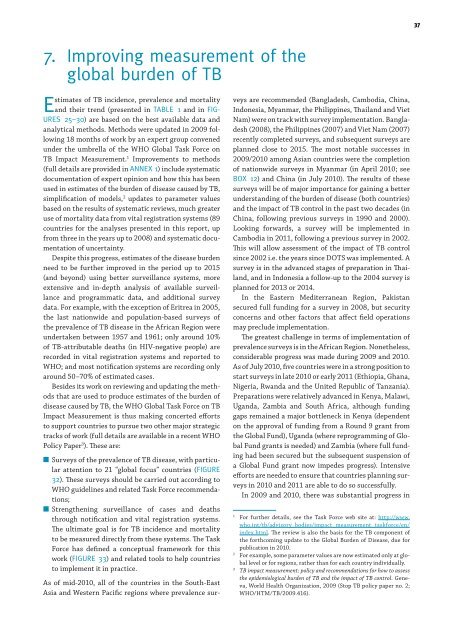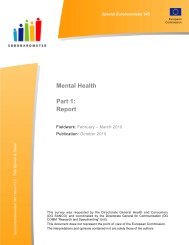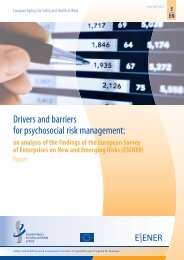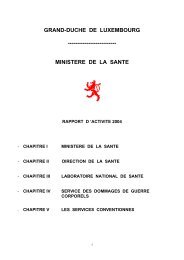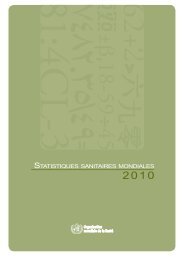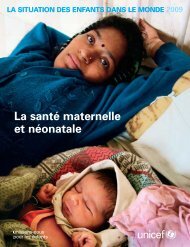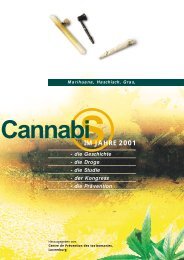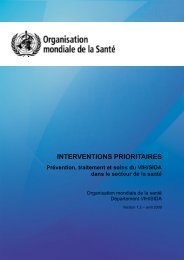Global Tuberculosis Control 2010 - Florida Department of Health
Global Tuberculosis Control 2010 - Florida Department of Health
Global Tuberculosis Control 2010 - Florida Department of Health
Create successful ePaper yourself
Turn your PDF publications into a flip-book with our unique Google optimized e-Paper software.
stimates <strong>of</strong> TB incidence, prevalence and mortality<br />
and their trend (presented in and in <br />
) are based on the best available data and<br />
analytical methods. Methods were updated in 2009 following<br />
18 months <strong>of</strong> work by an expert group convened<br />
under the umbrella <strong>of</strong> the WHO <strong>Global</strong> Task Force on<br />
TB Impact Measurement. 1 Improvements to methods<br />
(full details are provided in ) include systematic<br />
documentation <strong>of</strong> expert opinion and how this has been<br />
used in estimates <strong>of</strong> the burden <strong>of</strong> disease caused by TB,<br />
simplification <strong>of</strong> models, 2 updates to parameter values<br />
based on the results <strong>of</strong> systematic reviews, much greater<br />
use <strong>of</strong> mortality data from vital registration systems (89<br />
countries for the analyses presented in this report, up<br />
from three in the years up to 2008) and systematic documentation<br />
<strong>of</strong> uncertainty.<br />
Despite this progress, estimates <strong>of</strong> the disease burden<br />
need to be further improved in the period up to 2015<br />
(and beyond) using better surveillance systems, more<br />
extensive and in-depth analysis <strong>of</strong> available surveillance<br />
and programmatic data, and additional survey<br />
data. For example, with the exception <strong>of</strong> Eritrea in 2005,<br />
the last nationwide and population-based surveys <strong>of</strong><br />
the prevalence <strong>of</strong> TB disease in the African Region were<br />
undertaken between 1957 and 1961; only around 10%<br />
<strong>of</strong> TB-attributable deaths (in HIV-negative people) are<br />
recorded in vital registration systems and reported to<br />
WHO; and most notification systems are recording only<br />
around 50–70% <strong>of</strong> estimated cases.<br />
Besides its work on reviewing and updating the methods<br />
that are used to produce estimates <strong>of</strong> the burden <strong>of</strong><br />
disease caused by TB, the WHO <strong>Global</strong> Task Force on TB<br />
Impact Measurement is thus making concerted efforts<br />
to support countries to pursue two other major strategic<br />
tracks <strong>of</strong> work (full details are available in a recent WHO<br />
Policy Paper 3 ). These are:<br />
Surveys <strong>of</strong> the prevalence <strong>of</strong> TB disease, with particular<br />
attention to 21 “global focus” countries (<br />
). These surveys should be carried out according to<br />
WHO guidelines and related Task Force recommendations;<br />
Strengthening surveillance <strong>of</strong> cases and deaths<br />
through notification and vital registration systems.<br />
The ultimate goal is for TB incidence and mortality<br />
to be measured directly from these systems. The Task<br />
Force has defined a conceptual framework for this<br />
work () and related tools to help countries<br />
to implement it in practice.<br />
As <strong>of</strong> mid-<strong>2010</strong>, all <strong>of</strong> the countries in the South-East<br />
Asia and Western Pacific regions where prevalence surveys<br />
are recommended (Bangladesh, Cambodia, China,<br />
Indonesia, Myanmar, the Philippines, Thailand and Viet<br />
Nam) were on track with survey implementation. Bangladesh<br />
(2008), the Philippines (2007) and Viet Nam (2007)<br />
recently completed surveys, and subsequent surveys are<br />
planned close to 2015. The most notable successes in<br />
2009/<strong>2010</strong> among Asian countries were the completion<br />
<strong>of</strong> nationwide surveys in Myanmar (in April <strong>2010</strong>; see<br />
) and China (in July <strong>2010</strong>). The results <strong>of</strong> these<br />
surveys will be <strong>of</strong> major importance for gaining a better<br />
understanding <strong>of</strong> the burden <strong>of</strong> disease (both countries)<br />
and the impact <strong>of</strong> TB control in the past two decades (in<br />
China, following previous surveys in 1990 and 2000).<br />
Looking forwards, a survey will be implemented in<br />
Cambodia in 2011, following a previous survey in 2002.<br />
This will allow assessment <strong>of</strong> the impact <strong>of</strong> TB control<br />
since 2002 i.e. the years since DOTS was implemented. A<br />
survey is in the advanced stages <strong>of</strong> preparation in Thailand,<br />
and in Indonesia a follow-up to the 2004 survey is<br />
planned for 2013 or 2014.<br />
In the Eastern Mediterranean Region, Pakistan<br />
secured full funding for a survey in 2008, but security<br />
concerns and other factors that affect field operations<br />
may preclude implementation.<br />
The greatest challenge in terms <strong>of</strong> implementation <strong>of</strong><br />
prevalence surveys is in the African Region. Nonetheless,<br />
considerable progress was made during 2009 and <strong>2010</strong>.<br />
As <strong>of</strong> July <strong>2010</strong>, five countries were in a strong position to<br />
start surveys in late <strong>2010</strong> or early 2011 (Ethiopia, Ghana,<br />
Nigeria, Rwanda and the United Republic <strong>of</strong> Tanzania).<br />
Preparations were relatively advanced in Kenya, Malawi,<br />
Uganda, Zambia and South Africa, although funding<br />
gaps remained a major bottleneck in Kenya (dependent<br />
on the approval <strong>of</strong> funding from a Round 9 grant from<br />
the <strong>Global</strong> Fund), Uganda (where reprogramming <strong>of</strong> <strong>Global</strong><br />
Fund grants is needed) and Zambia (where full funding<br />
had been secured but the subsequent suspension <strong>of</strong><br />
a <strong>Global</strong> Fund grant now impedes progress). Intensive<br />
efforts are needed to ensure that countries planning surveys<br />
in <strong>2010</strong> and 2011 are able to do so successfully.<br />
In 2009 and <strong>2010</strong>, there was substantial progress in<br />
1<br />
For further details, see the Task Force web site at: http://www.<br />
who.int/tb/advisory_bodies/impact_measurement_taskforce/en/<br />
index.html. The review is also the basis for the TB component <strong>of</strong><br />
the forthcoming update to the <strong>Global</strong> Burden <strong>of</strong> Disease, due for<br />
publication in <strong>2010</strong>.<br />
2<br />
For example, some parameter values are now estimated only at global<br />
level or for regions, rather than for each country individually.<br />
3<br />
TB impact measurement: policy and recommendations for how to assess<br />
the epidemiological burden <strong>of</strong> TB and the impact <strong>of</strong> TB control. Geneva,<br />
World <strong>Health</strong> Organization, 2009 (Stop TB policy paper no. 2;<br />
WHO/HTM/TB/2009.416).


